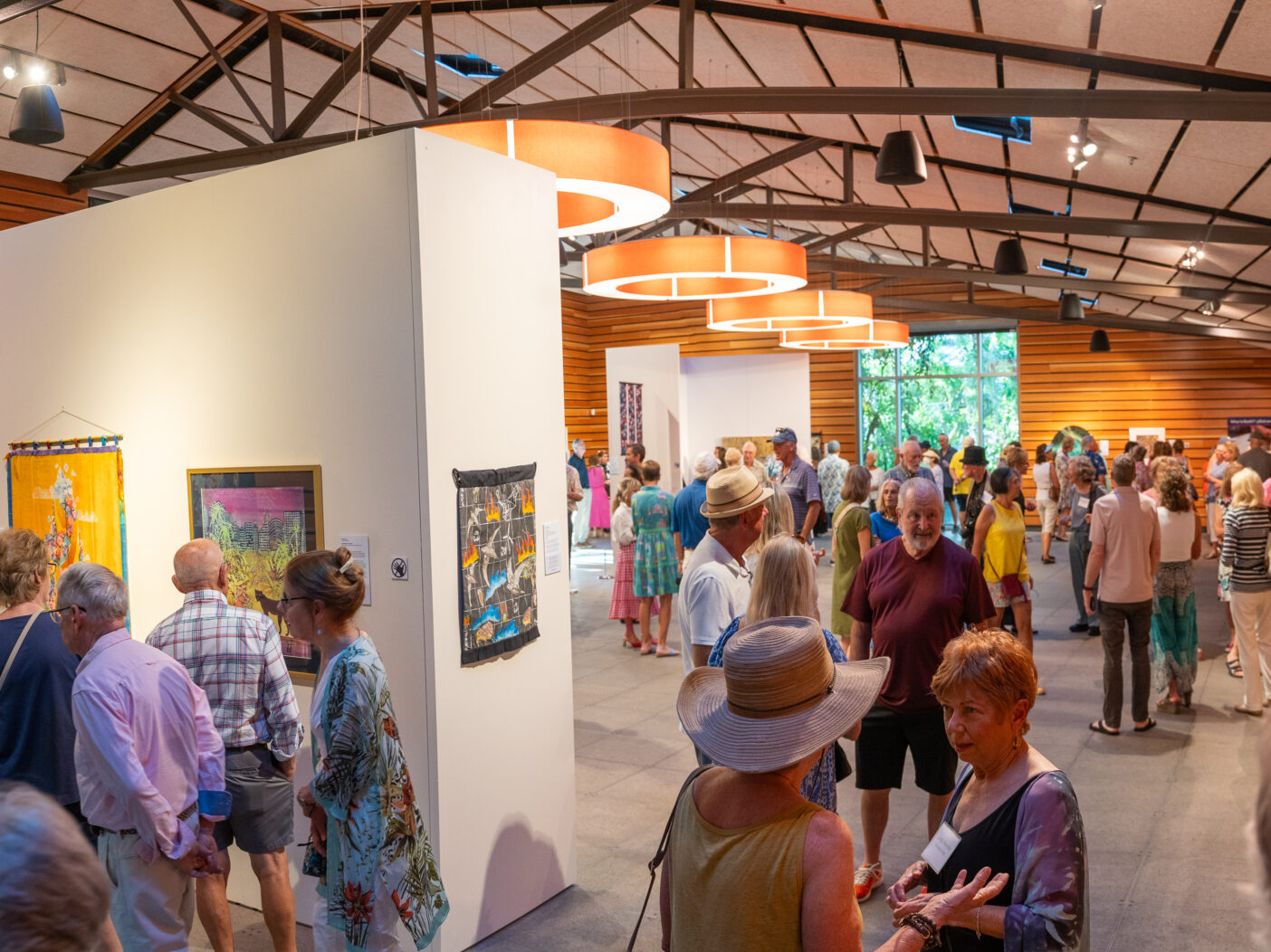
I first encountered batik in the 1970s, watching my mom study this centuries-old textile art. As a kid, I went to a batik art show her class put up. I remember having fun — I was 10, and they had cake — but thinking back to the work, it was rather staid. It didn’t have much to do with the real world, and certainly there was no comment on events.
Not so with Patterns of Change, the exhibition currently on display in Kapnick Hall. The show is produced with the Batik Guild, an international organization represented here by members from Canada, Chile, England, France, Russia, Sri Lanka, and the USA. Twenty-five artists submitted pieces representing environmental change they observed personally, with the goal of inspiring activism or hope. Artists reinforced their visual messages with written statements that speak directly to viewers.
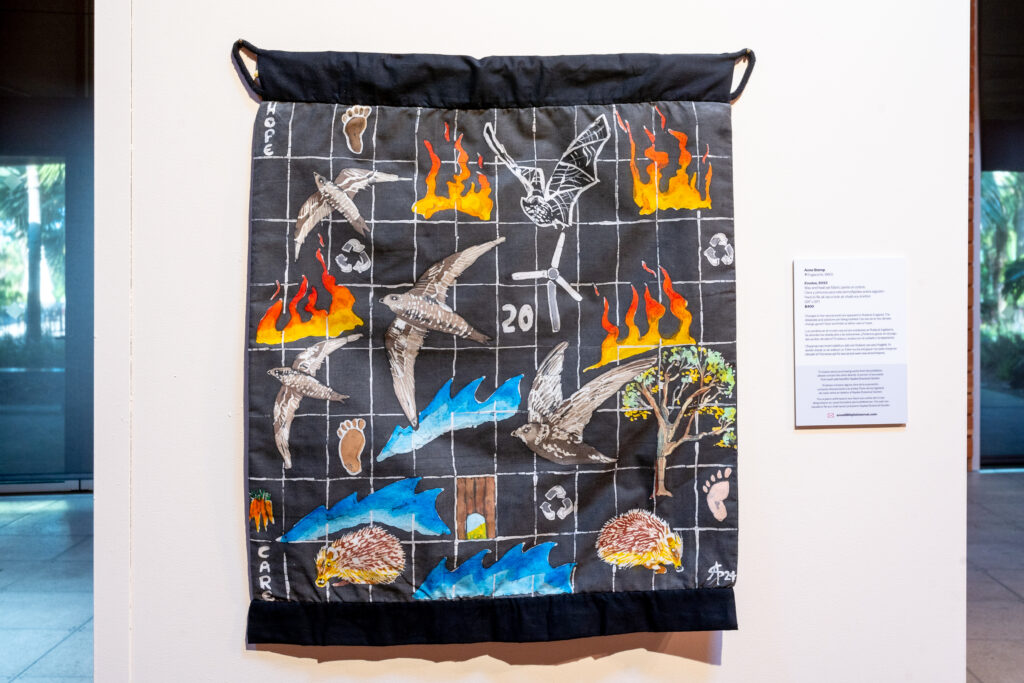
England’s Anne Stemp asks “Can we win in the climate change game?” Her piece, Exodus, is playfully composed like a board game, but it’s a game with serious stakes. In Stemp’s town of Rutland, “changes in the natural world are apparent.” The instructions for the game are to “start and finish at either care or hope.”
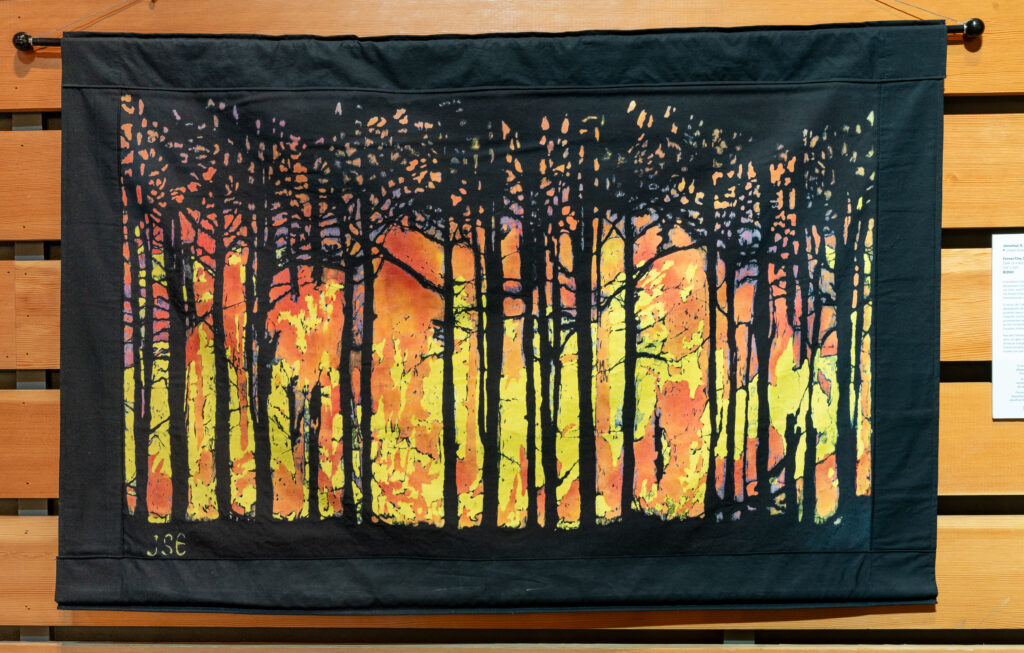
Jonathan S. Evans’ scarily beautiful piece Forest Fire, takes something of a documentary approach to its title, framing woods on fire in startling yellow, orange, and black. Evans lives in southern Colorado, where “we have already experienced the horror and devastation of a major forest fire … forest fires have become a regular part of life in the western United States.”
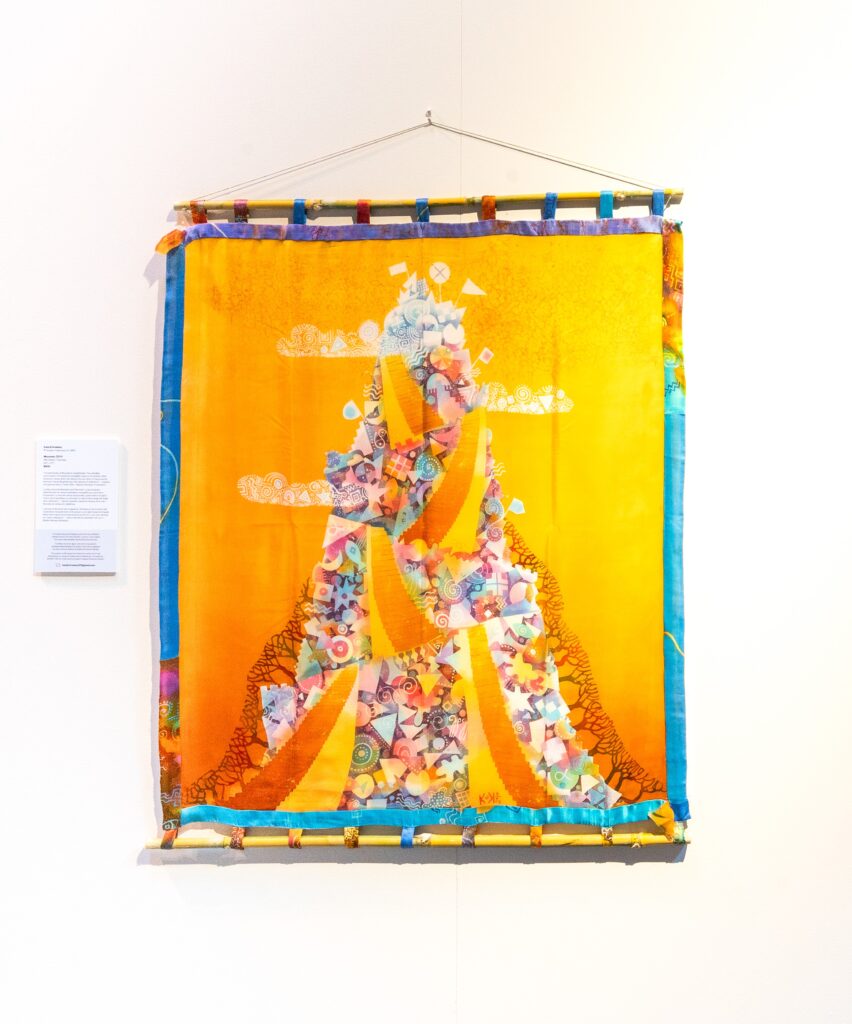
Kate Krivoshey’s Mountain appears whimsical at first glance but carries a serious message: a colorful critique of consumer culture. “The central idea of Mountain is wastefulness. The unbridled accumulation of material and intangible values by humankind, which can destroy the very fabric of nature …”
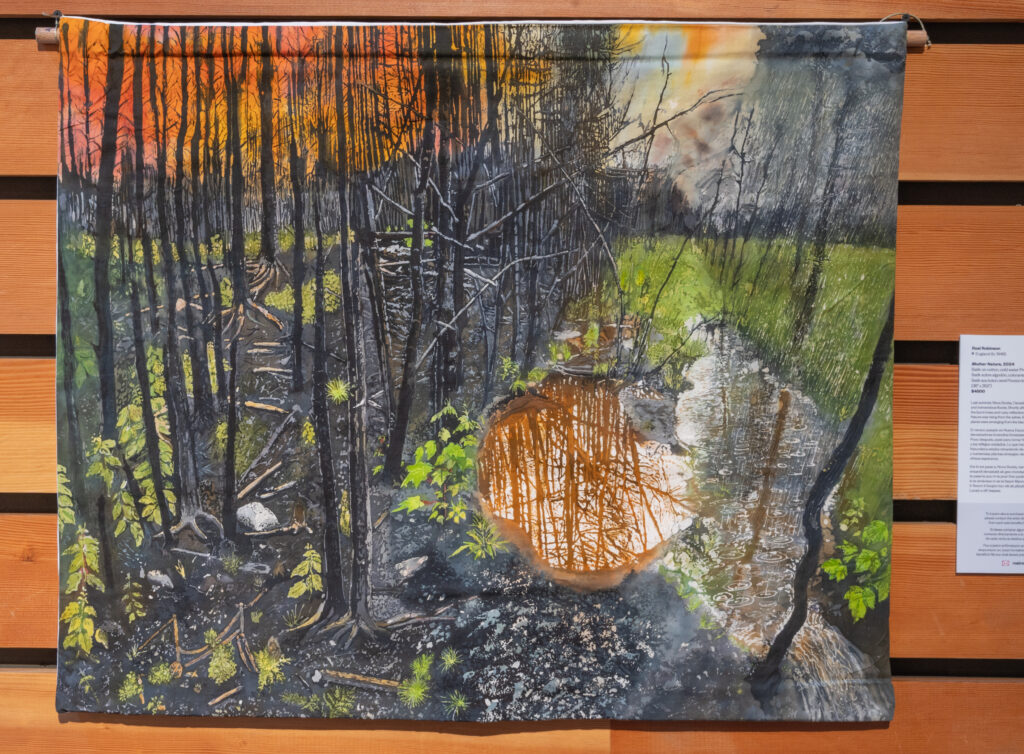
The artists acknowledge the world is at a critical juncture, but many of the pieces express hope and resilience. England’s Rosi Robinson details witnessing “devastating forest fires and tremendous floods” in Nova Scotia, Canada. In notes accompanying her piece Mother Nature, she writes, “Shortly afterward, I stopped by to take photos of the burnt trees … what amazed me was how Mother Nature was rising from the ashes. Bright green shoots … were emerging from the blackened earth. Nature offers hope.”
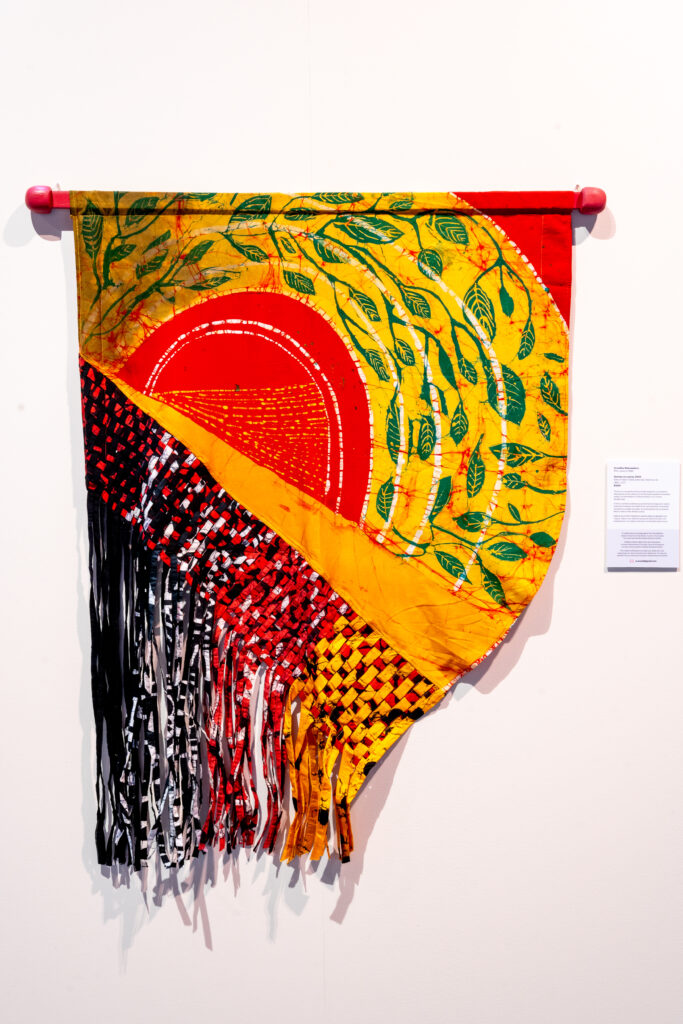
Sri Lanka’s Arundika Weerasekera looks to the stars in her piece Sunrays on Leaves. She finds hope in the sun, “… a strong force that provides energy for our existence … renewable energy … a literal solution to our current climate crisis.”
There’s not enough space here to cite every piece, so you’ll have to see them for yourself. It’s a beautiful show, with modern concerns expressed through an ancient art form. If you’re interested in learning more about batik, the Garden is offering drop-in demonstrations in Kapnick Hall with artists Muffy Clark Gill on June 1 and Leigh Herndon on June 22. The sessions run from 10am – noon.
Patterns of Change is included with Garden admission, free for Members.
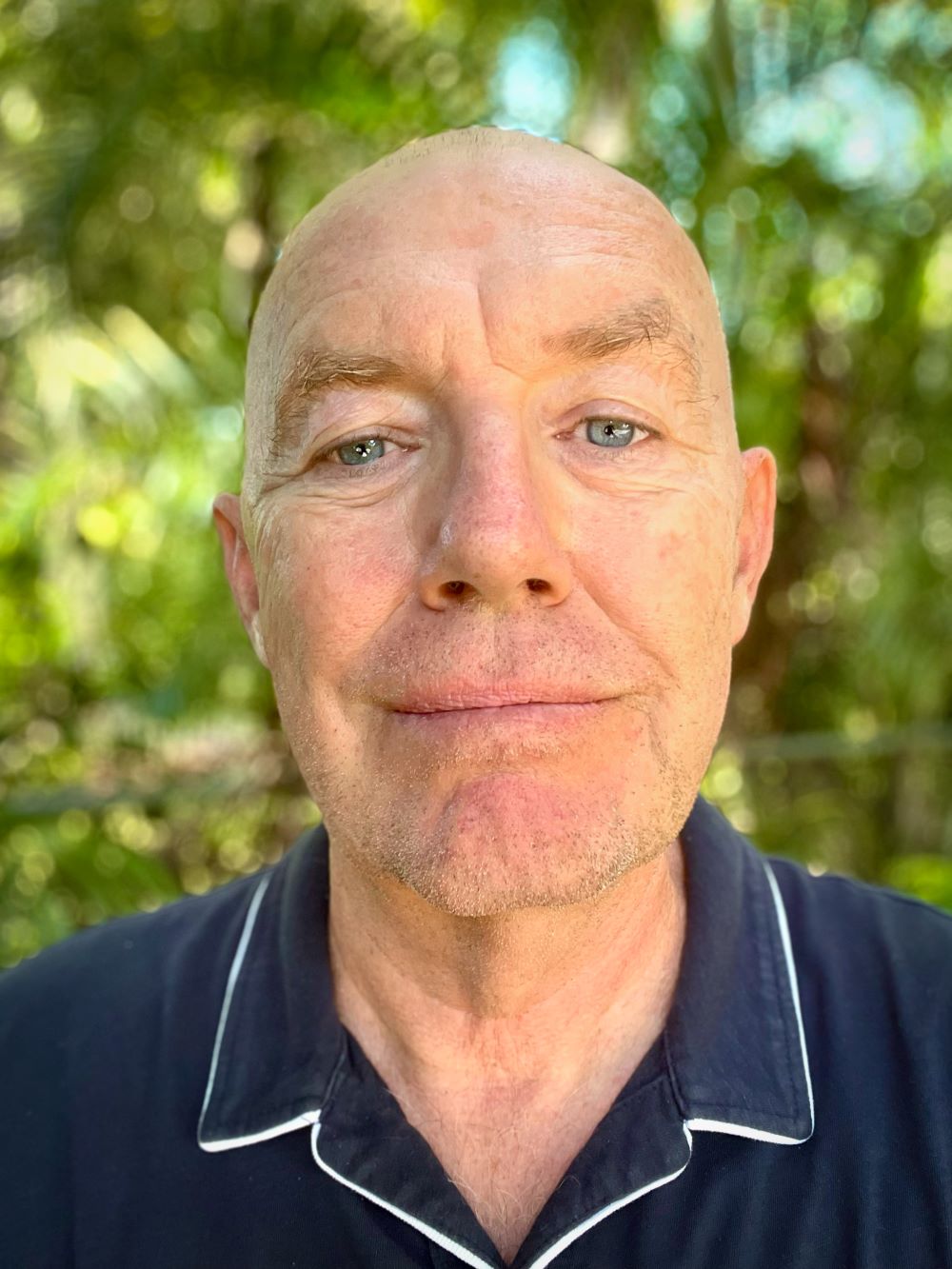
About the Author
John Eder is the Garden’s Multimedia Coordinator.

